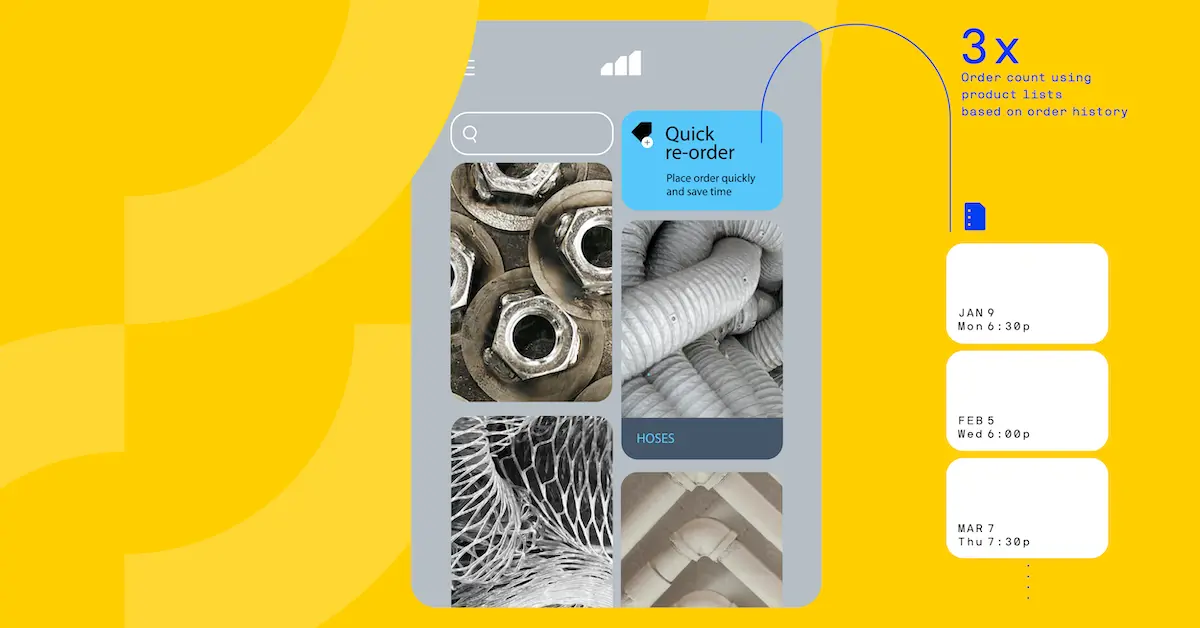Personalizing the buying experience with Content Cloud for B2B

Andy Klein

Imagine this scenario:
After a long week at work, you wake up on Saturday morning to strange noises coming from your 15-year-old refrigerator. Like most people you jump online to start researching a replacement.
You go to several websites where you can select features that are important to you, do side-by-side comparisons, and read customer reviews. One website has a chatbot that greets you on the appliances page and offers to refine your available options by answering a few questions. Another website remembers you on a return visit and presents information on their current sale.
Finally, you select your new refrigerator, and within 10 minutes complete the sale online and receive a confirmation email with transaction and product information. That was easy.
B2B commerce should be no different
Customers now have the same expectations with B2B commerce as they do with B2C – that is, they expect the same features and product information regardless of whether they’re buying a $10 item or a $10,000 item. And without the kind salesclerk that could guide you through a purchase at the local widget emporium, brands must come up with new ways to personalize the online shopping experience to encourage sales and increase customer loyalty.
Why is this important?
These days, online shoppers expect shopping experiences catered specifically to them regardless of the transaction. Without personalization, users are likely to engage less, purchase less, or gravitate to a competitor who is tailoring the experience to them.
A Salesforce study found that 84% of customers say that the experience a company provides is as important as its products and services. Customers want companies to be aware of their buying habits and tailor their messaging. Consequently, 54% indicate that they are annoyed when companies target them with content about something they’ve already purchased.
The best digital experiences are achieved by optimizing the end user experience in a way that adds value for the customer. It’s no longer enough to provide a simple online catalog and open the website for business. The most effective B2B commerce experience requires enhanced, personalized content and the best way to do that is to integrate the selling and marketing experience.
Integrating content with commerce
Optimizely’s B2B Commerce Cloud includes Spire, a simple content management system (CMS) that gives business users the ability to create site content and page elements without the need for developer resources. While this is a great feature for many smaller ecommerce sites, it does not meet the needs of B2B organizations with larger marketing teams and more complex content strategies.
To solve this, Optimizely has introduced an integrated version of its B2B Commerce Cloud and Content Cloud products. This new connected product takes advantage of B2B Commerce Cloud as a headless API and exposes a wealth of functionality to B2B marketers within the Content Cloud:
- Complete content and media management capabilities
- Content review and approval workflow
- Integrated personalization capabilities such as facet filtering, customer-specific catalogs, targeted content blocks, sitewide product comparisons, and dynamic cross-sells, upsells and product recommendations
- Out-of-the-box search engine that pulls combined results from both the B2B Commerce catalog and Content Cloud pages and content
- Multi-site management with the ability to leverage shared product, customer and order data
- Experimentation and A/B testing
By integrating B2B Commerce Cloud with Content Cloud, Optimizely has given marketers the tools they need to make data-driven content decisions, implement personalization at scale, and provide consistent delivery of rich and engaging product information across all digital touchpoints.
Accelerating the experience
In addition to the integration of the two platforms, Optimizely has released a B2B sample site that comes with pre-built templates, content blocks, and styles that customers can use to accelerate their time-to-market. These included assets can be customized to meet specific needs or can be used as a reference when building new components.
The sample site is fully functional and contains out-of-the-box B2B commerce features including:
- Complete self-service account management capabilities
- Customer-specific catalogs, pricing and availability
- SEO friendly URLs
- Enriched product content and customer reviews
- Quick order for repeat purchases
- Wish list to track regular orders
- Complete order and invoice history
Personalization is here to stay
As the number of digitally savvy millennials in B2B buying roles increases, the need for brands to deliver a seamless digital experience becomes more important. Successful B2B commerce will be driven by the optimized customer experience as personalization becomes a greater factor in engaging B2B buyers, increasing conversions, and driving sales and repeat purchases.
About Nishtech
Nishtech has been named a preferred partner for implementing Optimizely Commerce Cloud and B2B Commerce Cloud integrated solutions. We have extensive experience with this integration and have delivered rich, personalized enterprise-level B2B/B2C/B2X shopping experiences for the last 10 years. You can learn more about how we can help with your implementation by visiting us at nishtech.com.
--------------------------------------------------
Optimizely has been named a Leader in the 2022 Magic Quadrant for Digital Experience Platforms. The Gartner report provides a more in-depth overview of DXP market trends and assesses the strengths and cautions of several DXP providers. Download the report here.
